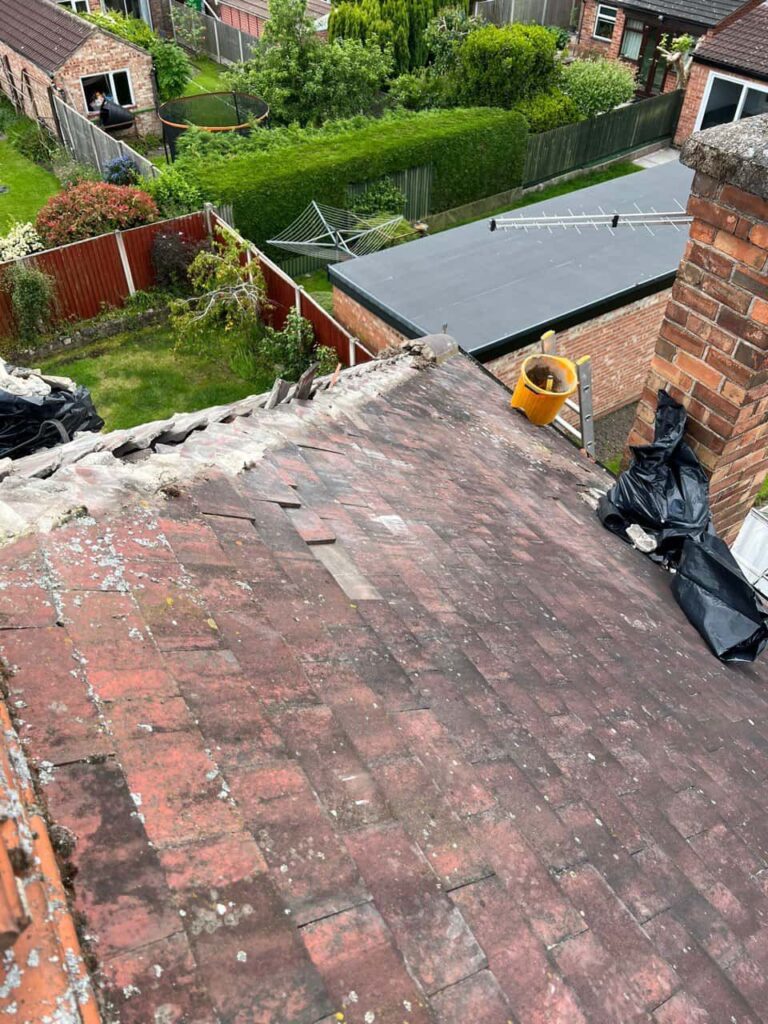Introduction: When it comes to maintaining your home, being prepared for potential roof emergencies is crucial. Severe weather, unexpected leaks, and other unforeseen events can compromise the integrity of your roof, leading to costly damage if not addressed promptly. At Wigston Roofing Repairs, we understand the importance of proactive preparation to safeguard your home. Here’s a comprehensive guide on how to prepare for potential roof emergencies.
Regular Roof Inspections
One of the most effective ways to prepare for potential roof emergencies is through regular inspections. Scheduling professional inspections at least twice a year, ideally in the spring and autumn, can help identify and address minor issues before they escalate. During these inspections, a professional roofer will check for the following:
- Missing or damaged shingles: These can allow water to penetrate your roof.
- Cracked or deteriorating flashing: Flashing protects the joints and edges of your roof from water infiltration.
- Blocked gutters and downspouts: Ensuring they are clear prevents water from backing up and causing leaks.
- Signs of wear and tear: Any general signs of ageing or damage that need attention.
Keep Your Roof and Gutters Clean
A clean roof and gutter system are essential for preventing emergencies. Leaves, debris, and moss can trap moisture, leading to water damage and leaks. Regularly cleaning your gutters and removing debris from your roof will help maintain proper drainage and prevent water from accumulating.
Trim Overhanging Trees
Overhanging tree branches can pose a significant risk to your roof, especially during storms. Strong winds can cause branches to break and fall onto your roof, causing damage. Regularly trimming branches that hang over your roof will reduce this risk and prevent leaves and debris from accumulating.
Address Minor Repairs Promptly
If left unattended, minor roof issues can quickly escalate into major problems. Promptly addressing small repairs, such as replacing missing shingles or fixing minor leaks, will prevent them from developing into emergencies. Regular maintenance by a professional roofing company like Wigston Roofing Repairs can ensure minor issues are resolved before they become costly.
Create an Emergency Roof Repair Kit
Preparing for a roof emergency means having the right tools and materials. An emergency roof repair kit can help you manage temporary fixes until professional help arrives. Your kit should include:
- Tarp or plastic sheeting: Cover damaged areas and prevent further water infiltration.
- Roofing cement: For quick fixes to small leaks or holes.
- Roofing nails and hammer: To secure tarps or plastic sheeting.
- Utility knife and scissors: For cutting materials to size.
- Heavy-duty gloves: To protect your hands while working on the roof.
Know the Signs of Roof Damage
Understanding the signs of potential roof damage can help you act quickly and prevent emergencies. Some common signs to look out for include:
- Water stains on your ceiling or walls: Indicating a possible leak.
- Sagging roof deck: Suggesting structural issues.
- Mould or mildew growth: Often a sign of moisture problems.
- Granules in gutters: Excessive granules from asphalt shingles can indicate wear and tear.
Have a Trusted Roofing Contractor
Establishing a relationship with a reliable roofing contractor is essential for quick and efficient emergency response. At Wigston Roofing Repairs, we offer emergency roofing services to address urgent issues promptly. Our readily available contact information ensures you can reach out immediately in an emergency.
Conclusion: Preparing for potential roof emergencies involves regular maintenance, prompt repairs, and having the right tools and contacts. Taking these proactive steps can minimise the risk of severe damage and ensure your home remains protected.
Call us on: 0116 464 7498
Click here to find out more about Wigston Roofing Repairs
Click here to complete our contact form and see how we can help you with your roofing needs.

